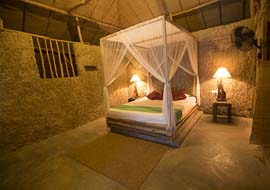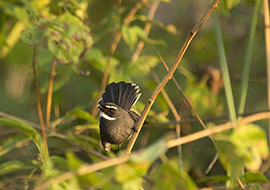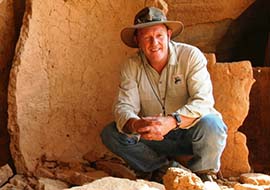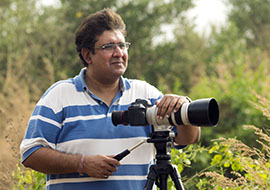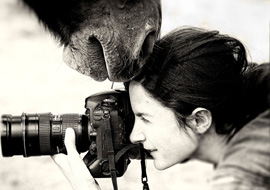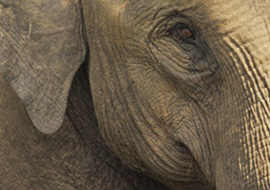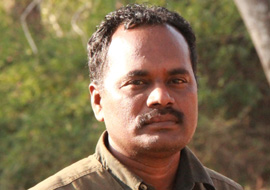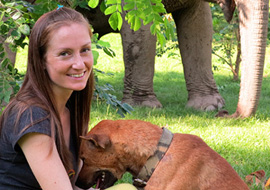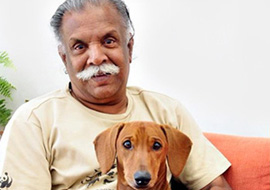Ann Warner lives in Harare, Zimbabe with her husband, two children and grandchildren. Born in England, Ann Warner has come a long way in understanding nature. Ann Warner has a Facebook Page called Ann Warner Wildlife Photography, where you will find her constantly updating wildlife photographs with a very detailed description of the species and how she photographed them.
- The Wild Walk Team
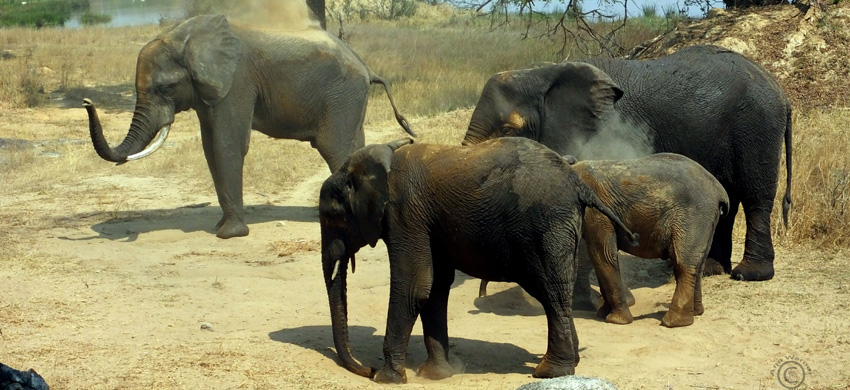
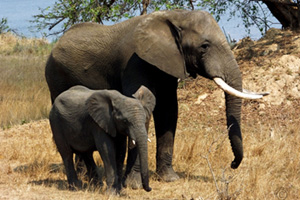
I have lived in Africa for over 40 years, arriving by cruise liner with my husband and two young daughters firstly to South Africa and then eventually moving to Zimbabwe where I currently reside. I have always enjoyed taking pictures but did not take up photography seriously until about seven years ago. I am an amateur photographer and usually take pictures for pleasure and now for the Facebook page that I have (Ann Warner Wildlife Photography). Living in Africa and loving all wildlife has given me a wide variety of subjects to allow my hobby to slowly unfold. However I must add that I have a live-in handicapped daughter who goes with us everywhere and I am sure you will realize this limits me to the less inaccessible areas.
The African Elephant are huge animals, that can be over 10ft tall and weigh anything from 3 to 6 tons and eating anything up to 200Kgs of vegetation a day and taking in around 200 litres of water, so each animal has a substantial impact on the environment.
The most obvious difference between the Indian and the African Elephant is the large ears of the latter which help to cool them by taking away the excess heat of the African sun. The familiar long, mobile and sensitive trunk which is not only used for obtaining food from high trees and drinking but is also used for regular communication with the rest of the group. On the birth of a new born calf the herd will acknowledge its presence by touching the young with their trunks and on death regardless of whether or not it is a member of the herd, this procedure is again enacted.
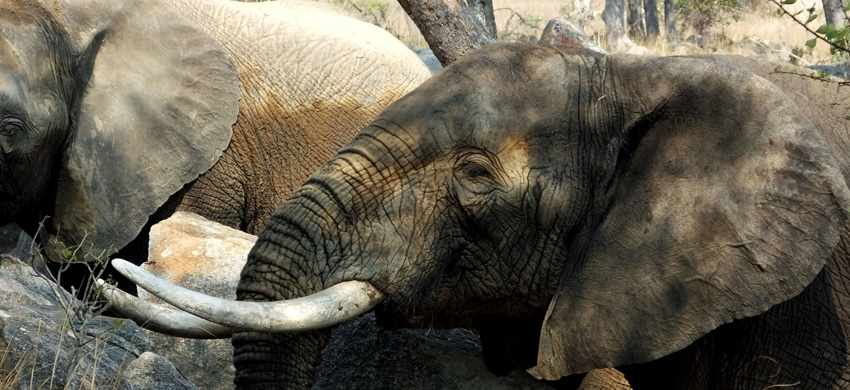 A herd of Elephant can cause a vast amount of damage as they feed, with trees overturned and often crops destroyed, hence the African is certainly not a fan of this enormous and dangerous animal as at least 40 people are killed every year. It is a regular occurrence for a tourist to be killed or badly injured each year as they decide to be photographed standing beside a wild Elephant, not the wisest of decisions; So people should not do silly things when out in the bush or traveling the roads in Africa. Remember wildlife has right of way, with African Elephants having turned over cars when threatened or challenged. Do not throw stones at them as this will annoy them as it would annoy you and I assure you, that though they are big, they can cover the ground faster than you. So stay safe and just think twice before putting yourself in danger. So many animals have had to be shot because of mans stupidity when often it is mostly men that has caused the problem in the first place.
A herd of Elephant can cause a vast amount of damage as they feed, with trees overturned and often crops destroyed, hence the African is certainly not a fan of this enormous and dangerous animal as at least 40 people are killed every year. It is a regular occurrence for a tourist to be killed or badly injured each year as they decide to be photographed standing beside a wild Elephant, not the wisest of decisions; So people should not do silly things when out in the bush or traveling the roads in Africa. Remember wildlife has right of way, with African Elephants having turned over cars when threatened or challenged. Do not throw stones at them as this will annoy them as it would annoy you and I assure you, that though they are big, they can cover the ground faster than you. So stay safe and just think twice before putting yourself in danger. So many animals have had to be shot because of mans stupidity when often it is mostly men that has caused the problem in the first place.
I have always respected whatever animal I am out trying to photograph, after all it is their land although the African bush is being encroached on so much these days by farming and mining activities which means less and less is left for our wildlife. We (Men) are the biggest predators to this animal not only from taking more land to build our society on but they are hunted extensively for their ivory tusks and I can foresee within the next twenty years this beautiful animal could be extinct in many parts of this continent or even before that, along with many more of our wildlife species.
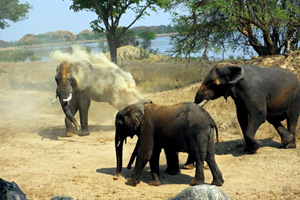 I regularly go up to the Kariba area of the Zambezi Valley in Zimbabwe knowing that many elephant live wild and to some degree do so with man close at hand, as one often sees them walking down the main roads and yes, if you are sensible you always give them right of way as a rampaging pachyderm can do an awful lot of damage to a car. Going out to photograph these beautiful creatures can be risky and one must always remember they are wild but I enjoy taking friends out that have been visiting us from the UK and who also have a passion for photography.
I regularly go up to the Kariba area of the Zambezi Valley in Zimbabwe knowing that many elephant live wild and to some degree do so with man close at hand, as one often sees them walking down the main roads and yes, if you are sensible you always give them right of way as a rampaging pachyderm can do an awful lot of damage to a car. Going out to photograph these beautiful creatures can be risky and one must always remember they are wild but I enjoy taking friends out that have been visiting us from the UK and who also have a passion for photography.
I recall one time recently I was tracking an elephant up a dirt road with my husband keeping the car running and close by and I expected my guest to be behind me. I gave him instructions on what to do and what not to do - basically staying behind me and at a distance. Not turning round but keeping my eyes on the elephant that is about 30 meters ahead of me, telling him if I say run he must run back to the car as fast as he can. I suddenly see the elephant turn with its trunk waving and dust flying, a sure sign it is getting upset and I thought he must have got wind of us and I am telling our guest to run, but on turning around I find that I am on my own! Our guest had not even got out the car in the first place, being too cautious to follow me. What made everything even funnier was the fact that a truck was coming up the other way which the elephant had picked up well before me and as I was running for safety this truck full of workmen were almost falling out the back of the truck laughing at this mad women legging it down the road thinking she had an elephant after her. It was such an hilarious picture to them.
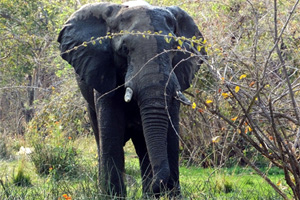 Vehicles have been turned over by elephants and we have had an elephant brush right up against our car but while I try to keep my distance and approach slowly and cautiously so that I am not seen as a threat to them. I also realize I am encroaching on their lives and their freedom of movement.
Vehicles have been turned over by elephants and we have had an elephant brush right up against our car but while I try to keep my distance and approach slowly and cautiously so that I am not seen as a threat to them. I also realize I am encroaching on their lives and their freedom of movement.
What do I enjoy about Elephant and other wildlife photography? The Challenge of going out and being able to capture the beauty of an animal in its natural surroundings gives me so much joy and then to be able to share those picture with so many people that are unable to see these animals apart from in Zoos.
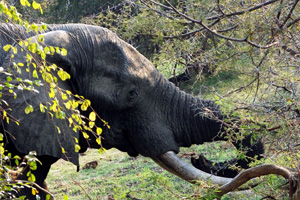 So many of these creatures are now being threatened with extinction and over the coming years more and more animals will be lost to the world. I do feel that we as wildlife photographers must try to leave our photographic records for our childrenís children, so they can see how very beautiful the world once was. Great tracts of land are being taken from our wildlife and so many beautiful creatures are being killed due to manís so called progress and greed. We are so lucky to be seeing and living among these beautiful fauna and to be able to share all that we see in its natural surrounding and photograph it, it is a gift which each of us wildlife photographers have been given.
So many of these creatures are now being threatened with extinction and over the coming years more and more animals will be lost to the world. I do feel that we as wildlife photographers must try to leave our photographic records for our childrenís children, so they can see how very beautiful the world once was. Great tracts of land are being taken from our wildlife and so many beautiful creatures are being killed due to manís so called progress and greed. We are so lucky to be seeing and living among these beautiful fauna and to be able to share all that we see in its natural surrounding and photograph it, it is a gift which each of us wildlife photographers have been given.
In my photography I have already achieved more than I could have imagined a few years ago, my wildlife page on Facebook has taken my pictures out to the world and I am so grateful for that. I have had requests from some parents asking if they can please print out some of my pictures for their children! What a pleasure that is, exactly what I want my pictures to do. Bring a curiosity that will hopefully stimulate more of an interest in an animal for the child or even an adult to find out more about it and also realize eventually how much danger these animals are in. Some of the species I have photographed have never been seen by some.
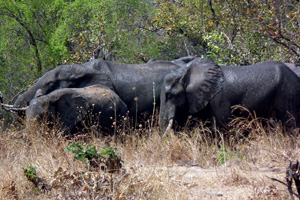 I would like to say thank you to all Wildlife photographers for always striving for a better image, for going out and at times getting into positions that could put them in discomfort or even danger, to bring back that special picture to show the rest of the world. You are a slightly different breed than most, the spirit of adventure and love for nature at times comes before your welfare. Stay safe people, you are needed!
I would like to say thank you to all Wildlife photographers for always striving for a better image, for going out and at times getting into positions that could put them in discomfort or even danger, to bring back that special picture to show the rest of the world. You are a slightly different breed than most, the spirit of adventure and love for nature at times comes before your welfare. Stay safe people, you are needed!
Lastly I would like to thank The Wild Walk for the opportunity to show some of my work and a little of what I have learned of this one species the 'Elephant' and to be able to express my passion. I wish you every success in the future with your new web page.

